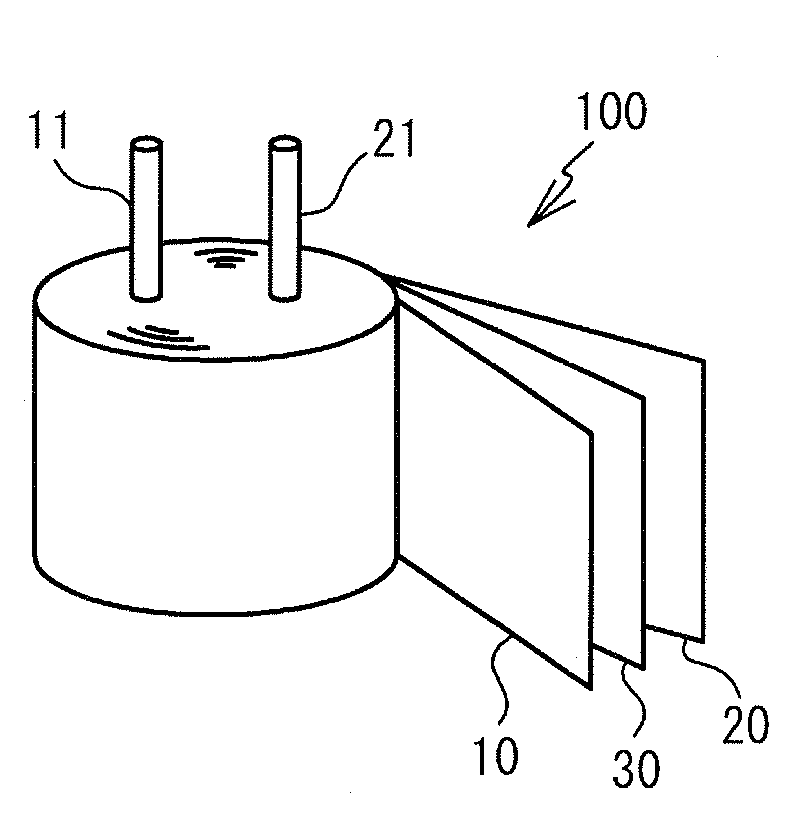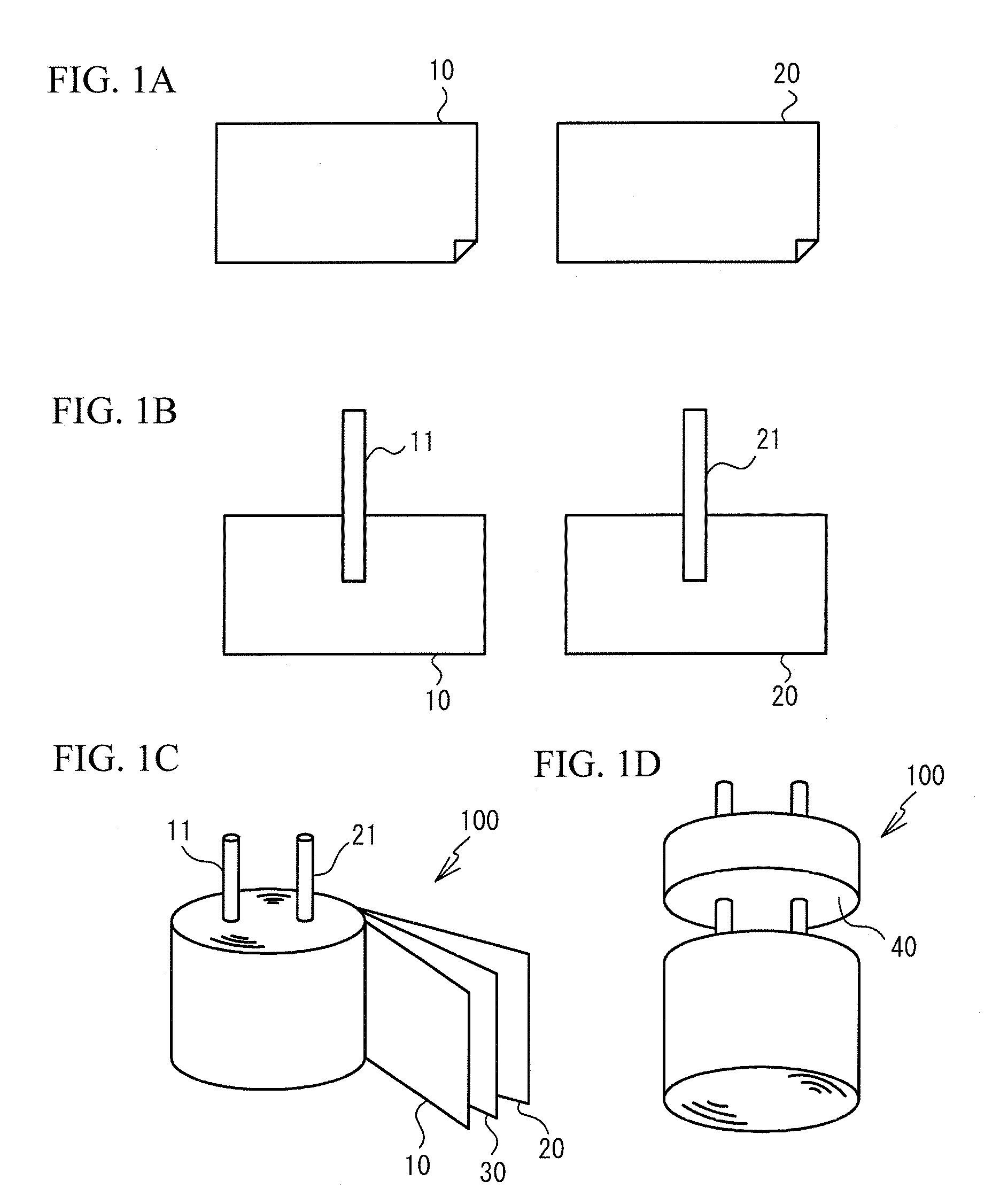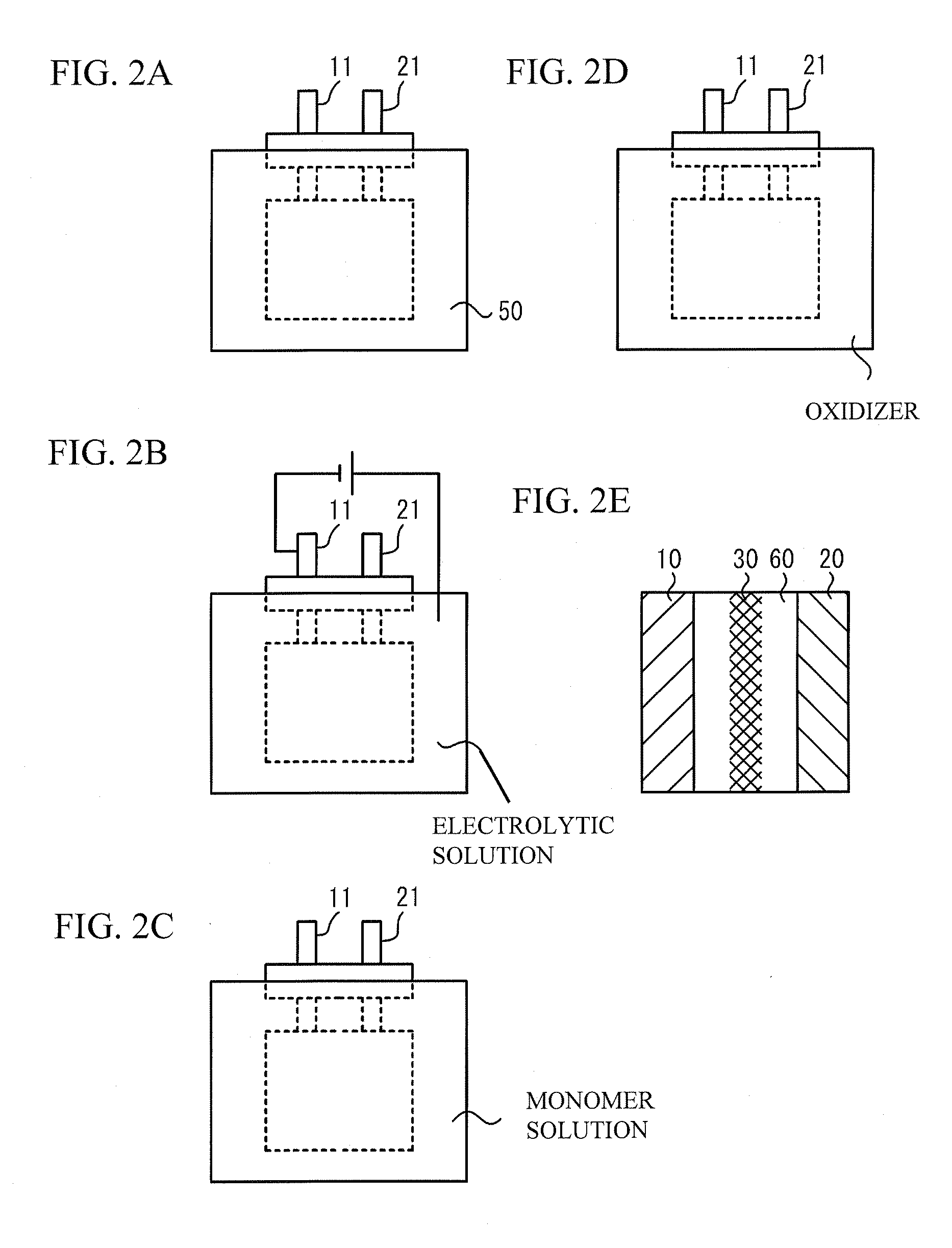Solid electrolytic capacitor and method of manufacturing the same
a solid electrolytic capacitor and solid electrolytic technology, which is applied in the manufacture of electrolytic capacitors, capacitors, electrical apparatus casings/cabinets/drawers, etc., can solve the problems of increasing the thermal stress applied to solid electrolytic capacitors, increasing the leaking current, so as to reduce the density of the separator and improve the effect of solid electrolytic capacitors
- Summary
- Abstract
- Description
- Claims
- Application Information
AI Technical Summary
Benefits of technology
Problems solved by technology
Method used
Image
Examples
first embodiment
[0020]FIG. 1A through 3B illustrate a method of manufacturing a solid electrolytic capacitor in accordance with a first embodiment. As shown in FIG. 1A, an anode foil 10 and a cathode foil 20 are provided. The anode foil 10 is made of a valve metal having a dielectric oxide coating (not illustrated) formed on a surface thereof. The valve metal used for the anode foil 10 is a metal such as aluminum. The dielectric coating may be formed when a surface of the valve metal is subjected to an etching treatment and a chemical oxidizing treatment. The cathode foil 20 is made of a metal foil such as aluminum holding carbide grain (not illustrated) on a surface thereof. The anode foil 10 and the cathode foil 20 are substantially isometric to each other.
[0021]Next, as shown in FIG. 1B, an anode terminal 11 is jointed to the anode foil 10. A cathode terminal 21 is jointed to the cathode foil 20. Then, as shown in FIG. 1C, the anode foil 10, the cathode foil 20 and a separator 30 are rolled toge...
examples
[0040]The solid electrolytic capacitor 300 and the solid electrolytic capacitor 300a were fabricated.
first example
[0041]The solid electrolytic capacitor 300 shown in FIG. 4A was fabricated in a first example. The anode foil 10 was formed of an aluminum foil that was subjected to an etching treatment and a chemical conversion treatment and had a width of 2.7 mm. The cathode foil 20 was formed of an aluminum that had a width of 2.7 mm and held the carbon grains on the surface of the cathode foil 20. The anode foil 10, the cathode foil 20 and the separator 30 were rolled together, the separator 30 being between the anode foil 10 and the cathode foil 20.
[0042]The separator 30 is a mixed fiber in which hemp fiber and polyamide resin are mixed in a weight ratio of 1:1. Cellulose-degrading enzyme made by Amano Enzyme Inc. was used as the enzyme for degrading the natural fiber. The enzyme was solved in pure water. And water solution having 1.0 weight % was formed. The rolled element 100 had been immersed in the water solution for 12 hours in a temperature-controlled bath having temperature of 50 degree...
PUM
| Property | Measurement | Unit |
|---|---|---|
| Density | aaaaa | aaaaa |
Abstract
Description
Claims
Application Information
 Login to View More
Login to View More - R&D
- Intellectual Property
- Life Sciences
- Materials
- Tech Scout
- Unparalleled Data Quality
- Higher Quality Content
- 60% Fewer Hallucinations
Browse by: Latest US Patents, China's latest patents, Technical Efficacy Thesaurus, Application Domain, Technology Topic, Popular Technical Reports.
© 2025 PatSnap. All rights reserved.Legal|Privacy policy|Modern Slavery Act Transparency Statement|Sitemap|About US| Contact US: help@patsnap.com



